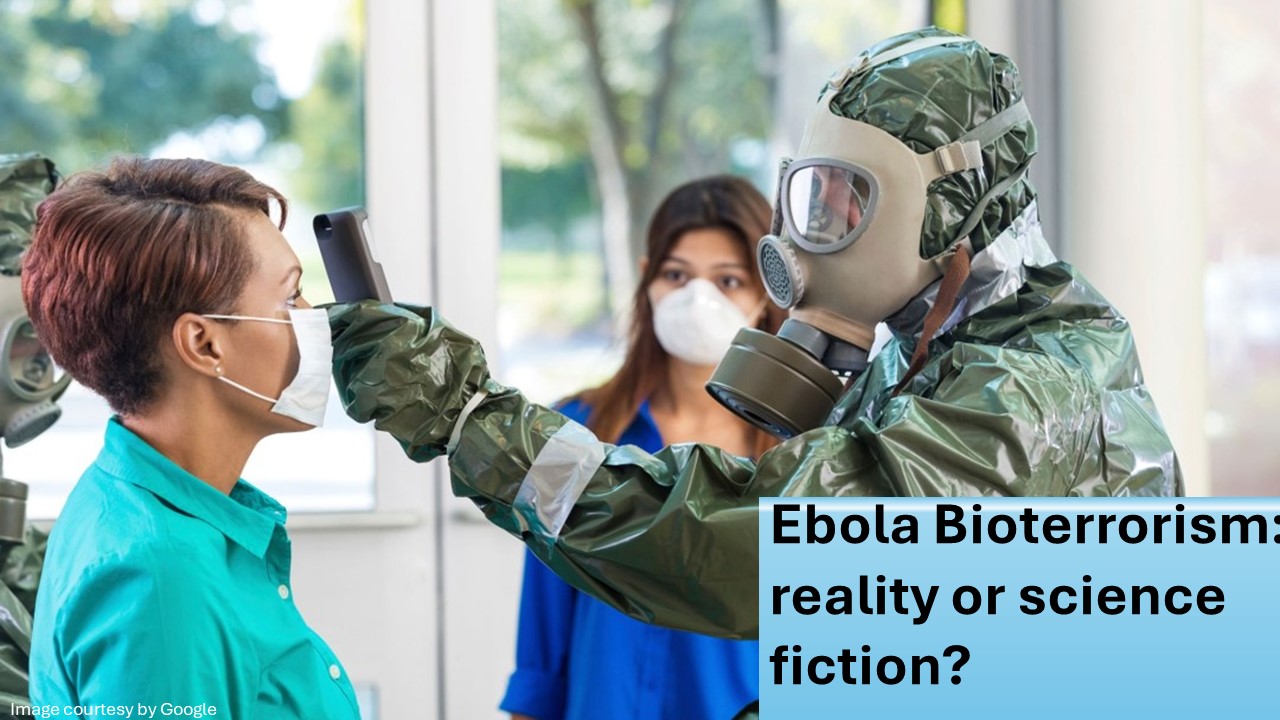Any outbreak or disease that involves the intentional release or dissemination of biological agents like bacteria and viruses comprises bioterrorism. Ebola is one such virus that has alarmed the entire globe’s security with its virulent properties. The 2014 Ebola outbreak in Africa is the largest in history, having a 90% fatal rate. The frequency of human accessibility of Ebola in Africa and other suspected countries is increasing at an alarming rate; this unprecedented outbreak and virus accessibility has raised the question of the human usage of the virus for harmful purposes or, more aptly, for bioterrorism. Any intentional or planned acquisition of this virus by terrorist groups will dismay global security. This is because of the reasons that Ebola is pathogenicity and is very high. Furthermore, no vaccines have been developed to undo the adverse effects. Threats are possible because infectious diseases could spread to adjoining African places, and viruses could be used as potential bioterrorist agents.
Epidemiology of Ebola
Ebola naturally occurs in the animal population and could be transmitted to humans through direct contact with the bodily fluids or contaminated clothes or linens of an infected person. Ebola causes Ebola hemorrhagic fever, which has symptoms of common flu-like fever and bleeding from orifices, followed by other symptoms of vomiting, diarrhoea, fatigue, headache, and myalgia. These symptoms are characteristics of another disease as well, which makes the diagnosis of Ebola difficult; hence, a person could be misdiagnosed and mistreated. As for treatment, there is no vaccine available so far. Scientists have been working for years toward finding preventive and post-exposure treatments, yet no approved vaccine for humans has yet been developed. However, a vaccine approved against viral hemorrhagic fevers may be rewarding, but it will take time to develop.
Transforming Ebola in a bioweapon is difficult and unlikely to happen.
The virus is highly pathogenic and has enormous potential to be used as a bioweapon; this ability of the virus is indeed a global security threat. However, it is noteworthy that the virus is not a biological weapon but could be transformed into a bioweapon by applying a scientist’s tacit skills and knowledge. Any biological agent used as a bioweapon could be detained from natural hosts or synthesized artificially in a laboratory. Specifically talking about Ebola, it is difficult to create an Ebola terror because of the following reasons:-
- Isolating any bio-agent in its natural environment calls for a high level of expertise in microbiology; the same applies to Ebola extraction.
- With Ebola, there is no chance of a bioattack unless it is induced by aerosol form. The aerosol form is a highly devastating form of Ebola. However, Ebola in aerosol form is ‘not a major mode of transmission in humans, as per research.
- Another difficulty is the weaponization of any bio-organism. A high-level scientific knowledge and technical understanding are prerequisites to transforming a micro-organism into a bioweapon. This knowledge could be acquired through hands-on practice and experience. A live host (either an animal or a human) infected with the virus is required to extract the virus. Only a few animals are known to serve as Ebola hosts, including primates, bats, and forest antelope, and none of these is particularly easy to detain. Let’s assume a terrorist group captures a live host; now they need to transport this host to suitably equipped laboratories, known as Category 4 or Biosafety level 4 Labs, which are not easy to come by; there are very few category-4 labs set up worldwide. Failure to work in such labs will quickly dispose of the virus to death. Additionally, the process of weaponizing involves enrichment, refining, toughening, milling, and preparation, and Ebola is not well suited to any of these processes.
- The Ebola virus is sensitive to climactic conditions, like exposure to sunlight and extreme temperatures; once the virus is extracted from its host, it requires a specific environment. Generally, the Ebola virus is believed to survive in relatively high temperatures and humidity; if it does not find a suitable climatic condition in the host population, the climatic conditions will kill it off quickly.
- Even if bioweapons are developed out of Ebola, the virus will not disseminate that easily because Ebola is not an airborne virus and gets transmitted through the consumption of contaminated meat and direct contact with infected bodily fluids. Moreover, following proper protocol, Ebola is less contagious than common viruses, such as measles or the flu.
The Ebola attack is deadly and can strike anyone in direct contact with the virus. Therefore, we must be alert and suspicious of flu-like symptoms and seek medical care immediately.
Max Jones
Latest posts by Max Jones (see all)
- How to Revive Your Sex Life - October 27, 2023
- Smoking and Asthma - October 20, 2023
- 10 Causes Of Erectile Dysfunction You Probably Didn’t Know About! - June 29, 2023




